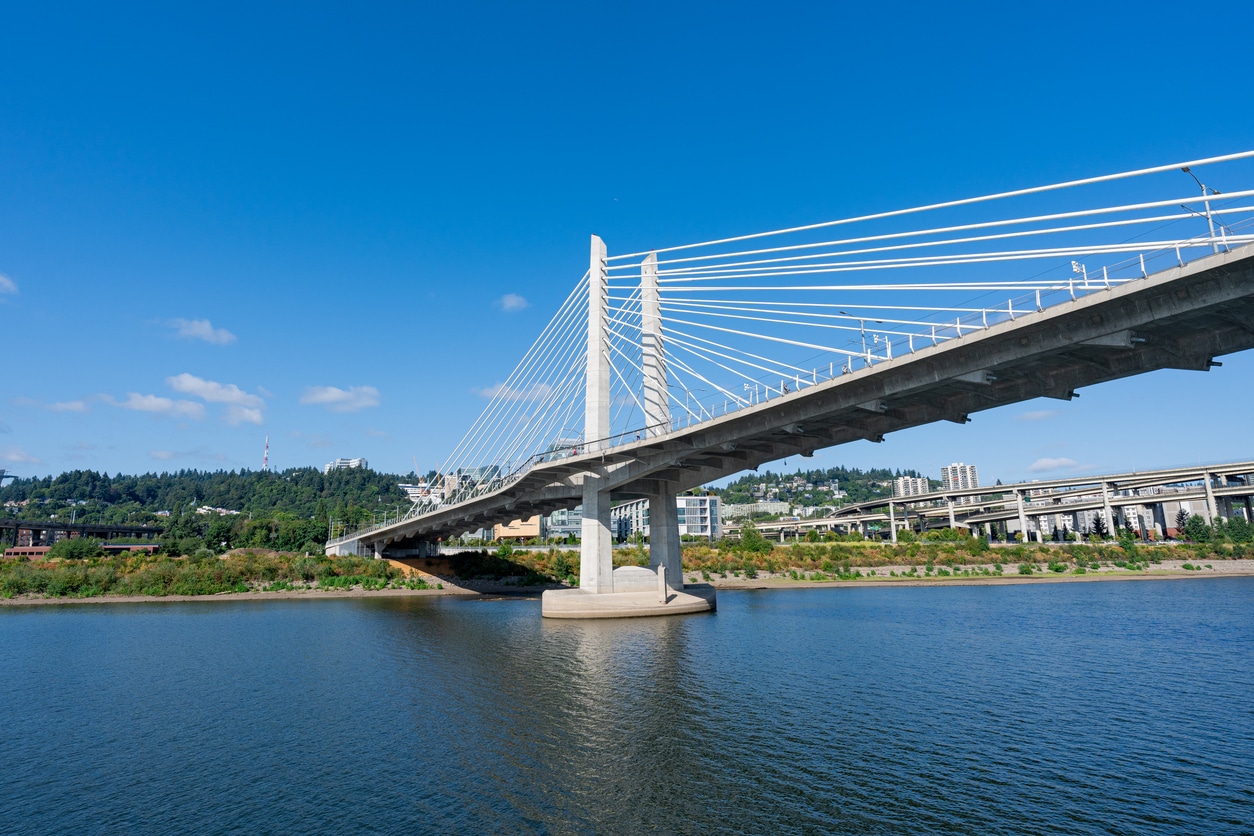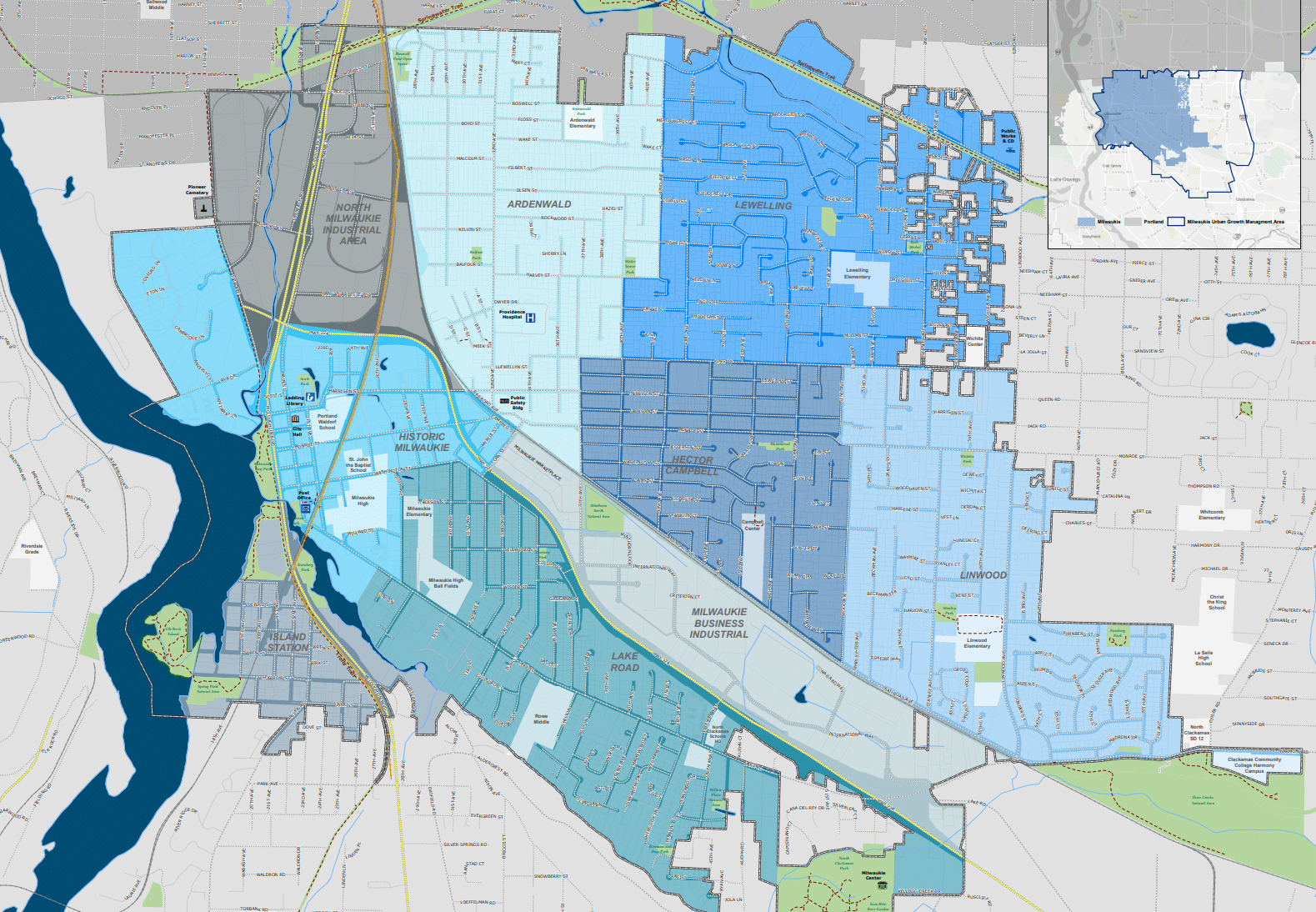What are the Quietest (and Loudest) Neighborhoods in Portland?
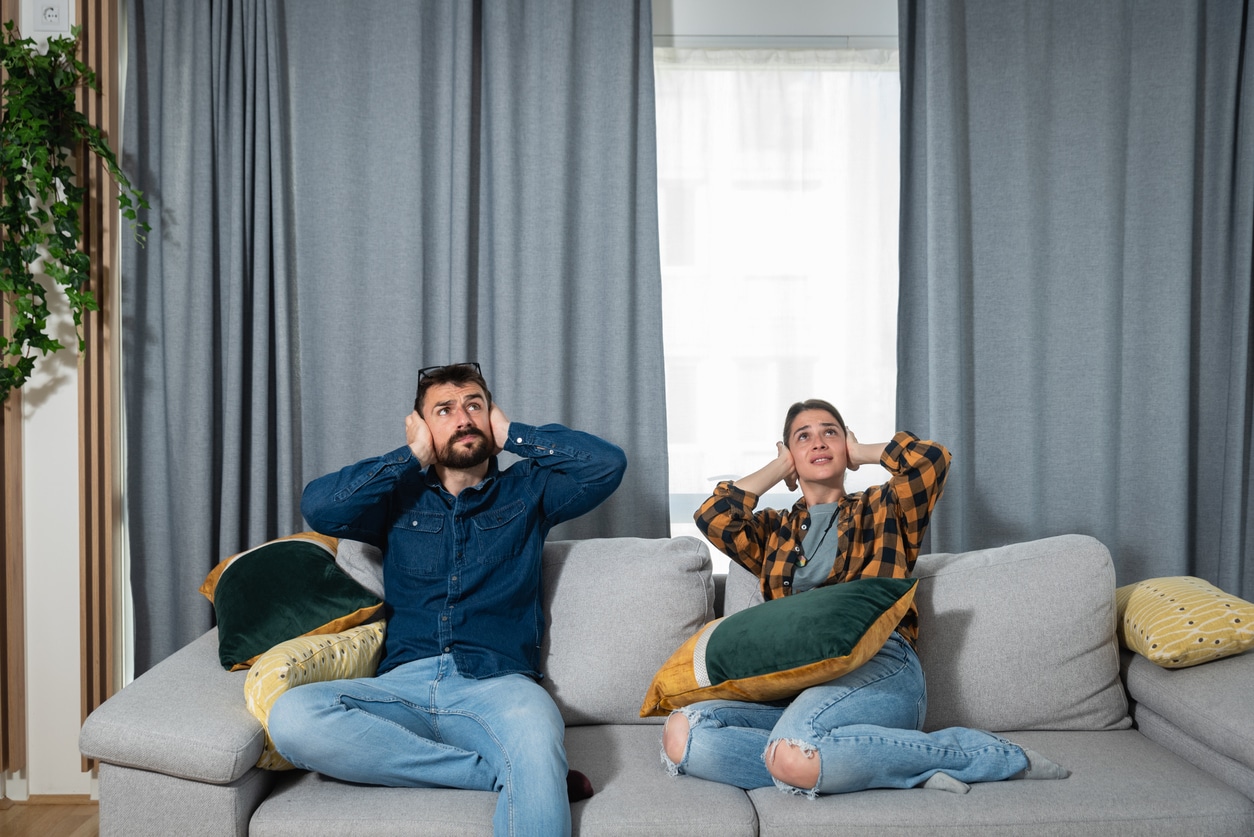
Updated 07/2024
Do you remember how quiet life was in 2020? As we all sequestered indoors, traffic decreased—even disappeared in some areas. The din of human voices didn’t mix and mingle with the airwaves, and even mass transit met a lull for a short time.
Since then, the world has returned to normal, but not entirely. Today, more people are working from home, putting even more focus on noise concerns.
Whether you work from home or just value silence, knowing where to find peace and quiet is important for your quality of life. We took a recent look at noise complaints and found some of the quietest (and loudest) neighborhoods in the Portland, Oregon metro area.
Neighborhood Noise Pollution, A Threat to Your Health
In urban environments, noise is everywhere, from abrupt, acute situations, like leaf blowers, jets, construction, and loud outdoor music events, to more chronic, almost unnoticeable, occurrences that become part of the fabric of city life, like constantly running HVAC systems, street traffic, and mass transit. These sounds can turn up the decibels to 80 dB in some residential areas, the equivalent of standing next to a perpetually running vacuum. Jet engines are even worse, reaching higher than 110 dB.
Because noise isn’t tangible, it’s easy to be unaware of its effect on us. But noise pollution is real, and with it comes challenges to our day-to-day quality of life, including certain health concerns.
The Environmental Protection Agency (EPA) has deemed noise pollution a threat to our overall health, noting its contribution to stress-related illnesses, hearing loss, speech interference, high blood pressure, and lost productivity, as well as cardiovascular disorders, ulcers, sleep disturbances, and even low birth weight in babies.
Invasive and constant noise can present learning challenges for kids, too, and especially for those with ADD and ADHD. Sound pollution can also have a notable impact on mental health. A European study noted an increase in anxiety medications in those living in areas with a 10-decibel increase in airport noise. Another follow-up study found marked depressive symptoms in people who lived in areas with high residential traffic noise.
Not only does noise pollution have a definable impact on our physical and mental health, but one study also found that home values go up between 8% and 10% when a home is away from a busy road.
Noise Complaints in Portland
Portland is considered one of the top music cities in the US, but the sound isn’t just limited to concert venues. Loud stereo music tops the list of residential noise complaints in Portland, followed by construction noise and live, amplified outdoor music.
Life east of the river is noisier than life west of the river, and the further northwest you go, the quieter you’ll find (hilly and forested areas cut down on noise significantly). More about these locations in a bit.
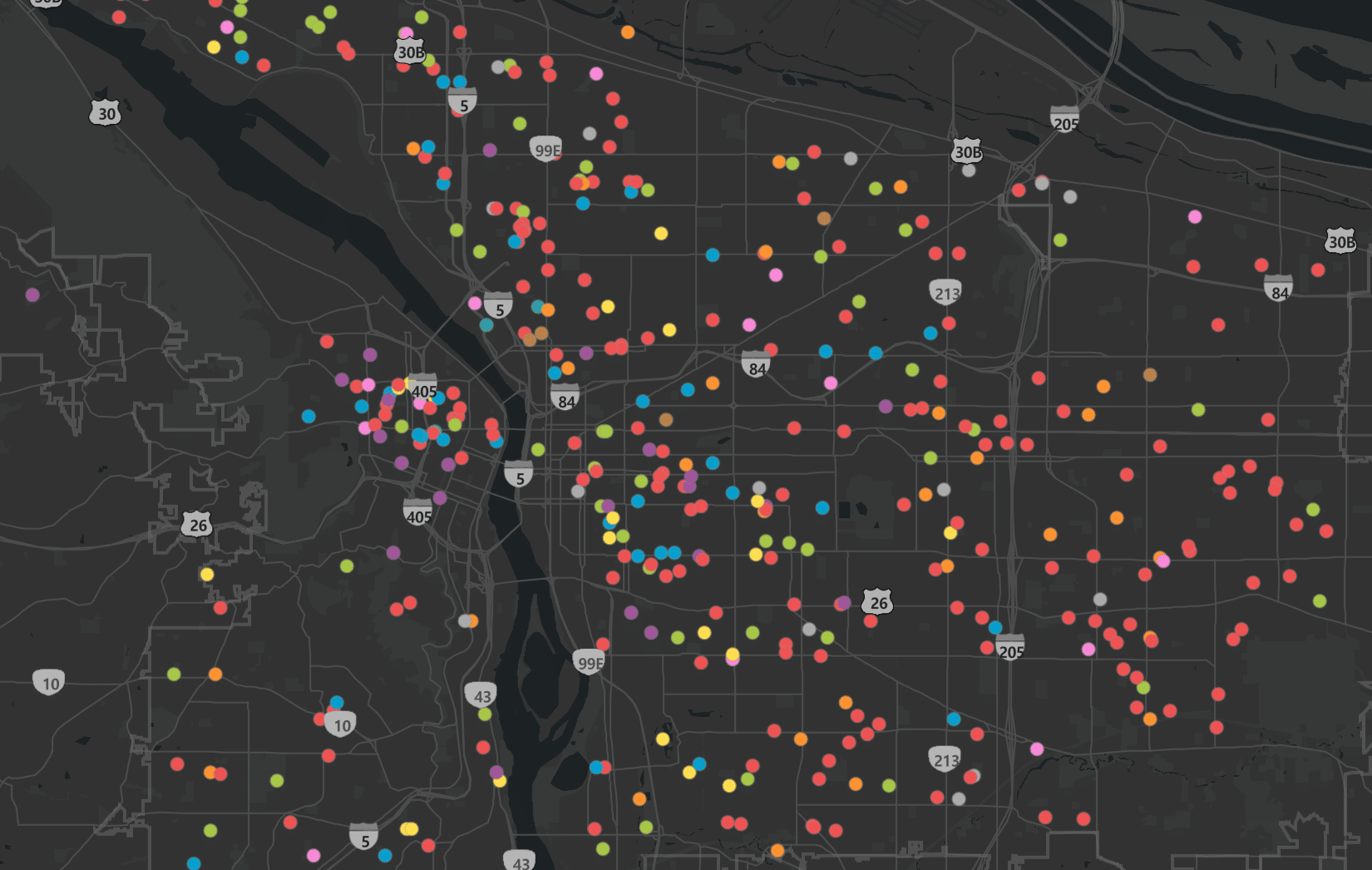
Noisiest Neighborhoods in Portland
You may think Downtown Portland would be one of the noisiest areas, and you’d be right. It has generated its fair share of noise complaints, especially in the areas of construction and loud music. Still, some of the noisiest neighborhoods in Portland are in the city’s northeast quadrant. Even the airport noise is considered “business as usual” in some areas.
Take, for example, Portland’s Sunderland neighborhood. Not only does it sit directly next to Portland International Airport’s boundary, but it’s also located within a mostly industrial neighborhood.
Other neighborhoods in this area are Cully, Sumner, Parkrose, and, to a lesser degree, Argay Terrace. If you’re looking for quiet, you’ll do best to avoid these neighborhoods.
Unfortunately, many people don’t have a choice. A 2017 study shows that low-income neighborhoods, and especially minority neighborhoods, have some of the highest noise pollution because they are typically situated near industrial parks, roadways, and airports.
The Portland International Airport Noise Impact Overlay Zone is intended to reduce the impact of aircraft noise surrounding Portland’s airport by limiting residential densities and requiring noise insulation, disclosure statements, and noise easements.
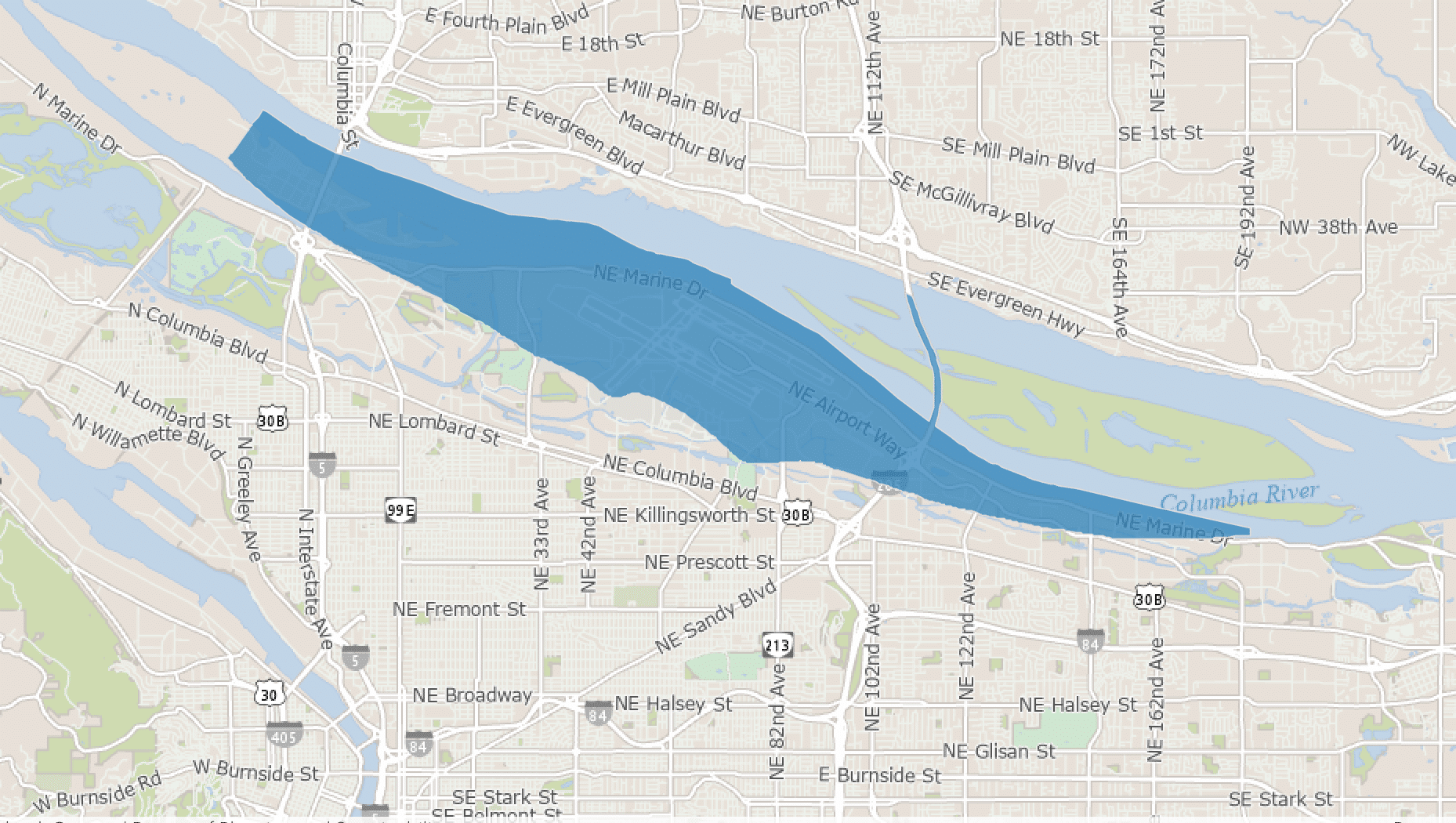
Other Portland neighborhoods subject to potential long-term construction noise are those along I-5, such as Lloyd District, Eliot, Boise, Humboldt, Piedmont, and East Columbia on the east side of I-5. Neighborhoods on the west side of I-5 are Overlook, Arbor Lodge, and Kenton.
What Makes a Neighborhood Quiet?
There are a few things to look for when shopping for a home and considering noise levels.
■ Culture. Understanding a neighborhood’s culture is part of determining whether it is right for you. All neighborhoods generate noise, so your choice and decision may rest on the noise you prefer or can tolerate. For example, some neighborhoods may be overrun with leaf blowers at 6 AM. Others might be silent after sunrise but come alive when the sun goes down with parties, outdoor gatherings, and music.
■ Distance. Check how far the neighborhood is from the nearest “point source” of noise, like a freeway, factory, or distribution warehouse. Those sensitive to noise should seek to live along strictly residential roads, where unnecessary traffic is not likely to pass through. Remember that rural areas can also be noisy due to farm equipment and other activities.
■ Density. Humans are noisy, and the more there are in a neighborhood, the louder it gets. Portland population densities range from 15,500 people per square mile (in the Goose Hollow neighborhood near downtown) to the low hundreds of people per square mile, where homes are larger and/or farther apart.
■ Trees and greenery. Trees absorb sound and create “white noise” (rustling of leaves, birdsong, etc.) that mask other disruptive, annoying noises in the area.
Our Top Picks for the Quietest Portland Neighborhoods
Northwest Portland
Virtually all of Northwest Portland, outside the boundaries of the NW 23rd-Nob Hill District, was void of noise complaints, except for a single complaint of a roof fan in Northwest Heights. This incident aside, we consider the neighborhood one of our top picks.
Check out the links below and see what these neighborhoods have to offer.
Northwest Heights
Thanks to the massive Forest Park and a population density of just 3500 people/square mile, this neighborhood is about as quiet as you can get within the Portland city limits. It had zero noise complaints this year (as of this writing), and the nearest major road, Highway 26, is a long 4 miles away.
Find available homes in Northwest Heights
Roseway
Roseway is in NE Portland and fairly quiet. Even though it is a higher-density neighborhood and close to the airport, it has relatively few noise complaints and is a peaceful pocket of Portland. Part of this is thanks to the Rose City Golf Course that borders the southern end.
Find available homes in Roseway
Sumner
Despite being close to the airport and being affected by environmental noise from planes, it has had zero noise complaints. If you don’t mind the sound of a plane now and again, this neighborhood could work for you.
Find available homes in Sumner
This tucked-away neighborhood has windy roads, lush trees and plenty of landscape, all of which keep noises down. It has numerous parks and gardens.
Find available homes in Hillside
This area borders Northwest Height, Not Bill, Linnton, and Downtown Portland; in fact, it sits right in the middle of Portland. It has an urban feel, yet it is remarkably quiet. Much of this comes thanks to Forest Park, one of the most picturesque parks in the US. Its 5,000 acres are filled with trails and woodlands. Combined with its location near Nob Hill, Forest Park is one of the best areas to live in Portland.
Find available homes in Forest Park
This one-mile-long neighborhood is built on a ridge overlooking the Willamette River on the east side of Forest Park. It feels private despite being close to Downtown Portland. Homes here have jealous-inducing views of the forest and river.
Find available homes in Linnton
See all Northwest Portland neighborhoods.
Southwest Portland
While there were more noise complaints in some of Portland’s southwest neighborhoods, they were far fewer than those on the east side of the city. Taking this into account, along with the fact that I-5 and Highway 26 run through several of these neighborhoods, below are our picks for Southwest Portland.
One thing to keep in mind about this part of the city is that it’s densely wooded, so there are likely pockets in some southwest neighborhoods not listed here that also offer peace and quiet, even with nearby freeway noise.
Southwest Hills
This area of Portland is among the quietest and most convenient, offering two benefits in one. The layout and population distribution go a long way toward creating a quiet atmosphere. You get small parks and lower-density neighborhoods, and the hilly landscape and green space absorb some of the sounds of the I-5.
Find available homes in Southwest Hills
This neighborhood borders Southwest Hills, Hillsdale, Healy Heights, and Hayhurst, and it is a beautiful area of Portland. In some ways, it acts as one large park, offering massive amounts of greenery, nature, parks, and Fanno Creek along its southern border, all of which cut noise down. It also has a small-town feel and is primarily residential, lacking some restaurants and nightlife, but that just keeps life quieter. One section is part of Multnomah County, letting you take advantage of the county’s benefits.
Find available homes in Bridlemile
Maplewood is a quiet, small, suburban/rural area bordered by Ashcreek and Hayhurst. The neighborhood is filled with retirees and families. No hard-rocking or rambunctious nightlife here; instead, you will find lots of residential homes, green spaces, and a relaxed way of life, all while close to Downtown Portland. Neighboring areas offer shopping and other family-friendly activities.
Find available homes in Maplewood
Like many neighborhoods on this list, the quiet is partly thanks to parks and natural areas. It is also pretty laid-back and relaxed. The area primarily consists of families, retirees, and nature lovers. It has a suburban feel but is a nature lover’s delight, offering extensive forest trails, parks, and appealing Tryon Creek. It also has beautiful homes with tree-lined streets. The neighborhood is bordered by West Portland Park, Markham, South Burlingame, Collins View, and Arnold Creek.
Find available homes in Marshall Park
This serene area is another quiet place to call home. The hilly, wooden neighborhood is surrounded by Tyron State Park, Marshall Park, and Riverview Natural Area. Only two main roads pass through: SW Terwilliger Blvd and SW Boones Ferry Rd, and both roads are hilly, windy, and surrounded by trees. At the same time, the city is just a few minutes away. The neighborhood is home to three Lewis & Clark schools: its College of Arts and Sciences, its Graduate School of Education and Counseling, and its School of Law.
Find available homes in Collins View
See all Southwest Portland neighborhoods.
Ways to Protect Yourself from Noise Pollution
When shopping for a home, the obvious solution is to look for some of the quieter neighborhoods in Portland. However, you can’t always choose where you live, and maybe the home of your dreams is smack in the center of the noisiest part of the city. Thankfully, there are some things you can do to reduce noise pollution impact in your home, ranging in simplicity from wearing earplugs to sleep to planting a whole new row of trees.
If you’re looking to lessen the impact of outside sounds on your home as a whole, there are larger steps you can take. For example, improving home insulation impacts more than just how warm or cool your home is; it also helps block out unwanted noises, leading to less noise pollution. While not everyone is game to replace the insulation in their home, it can have a significant benefit on the overall noise in the area.
You can also do some landscaping to help reduce noise. Adding trees to your property blocks noise and produces white noise, which can help distract from louder noise in the neighborhood. You can also invest in a fence to help block some of the sound waves. While these are costly solutions, your dream home near I-5 or surrounded by loud construction can still be a reality. A bit of landscaping makes a world of difference.
If you have noisy neighbors, there are solutions. White noise machines dampen the noise in your home. Investing in noise-suppressing flooring (such as carpeting) can also make a huge difference in how sound travels. Less permanent solutions include hanging up noise suppression panels on the wall closest to your neighbors, or working to fill rooms closest to your noisy neighbors with more furniture to act as a sound buffer.
Looking for a New Home in a Quiet Location?
Give our top 1% buyers team a call today. We have the full list of homes for sale in the Portland metro area in quiet neighborhoods. We’ve been matching homes to new owners for more than 20 years now, and we’d love to help you find your next perfect place. Or if you’re looking to move out of a noisy neighborhood, contact our top 1% sellers agents who charge less than average rates, but provide better marketing than most. Chat with the bot on this site or give us a call today at 503-714-1111. We’d love to connect!
